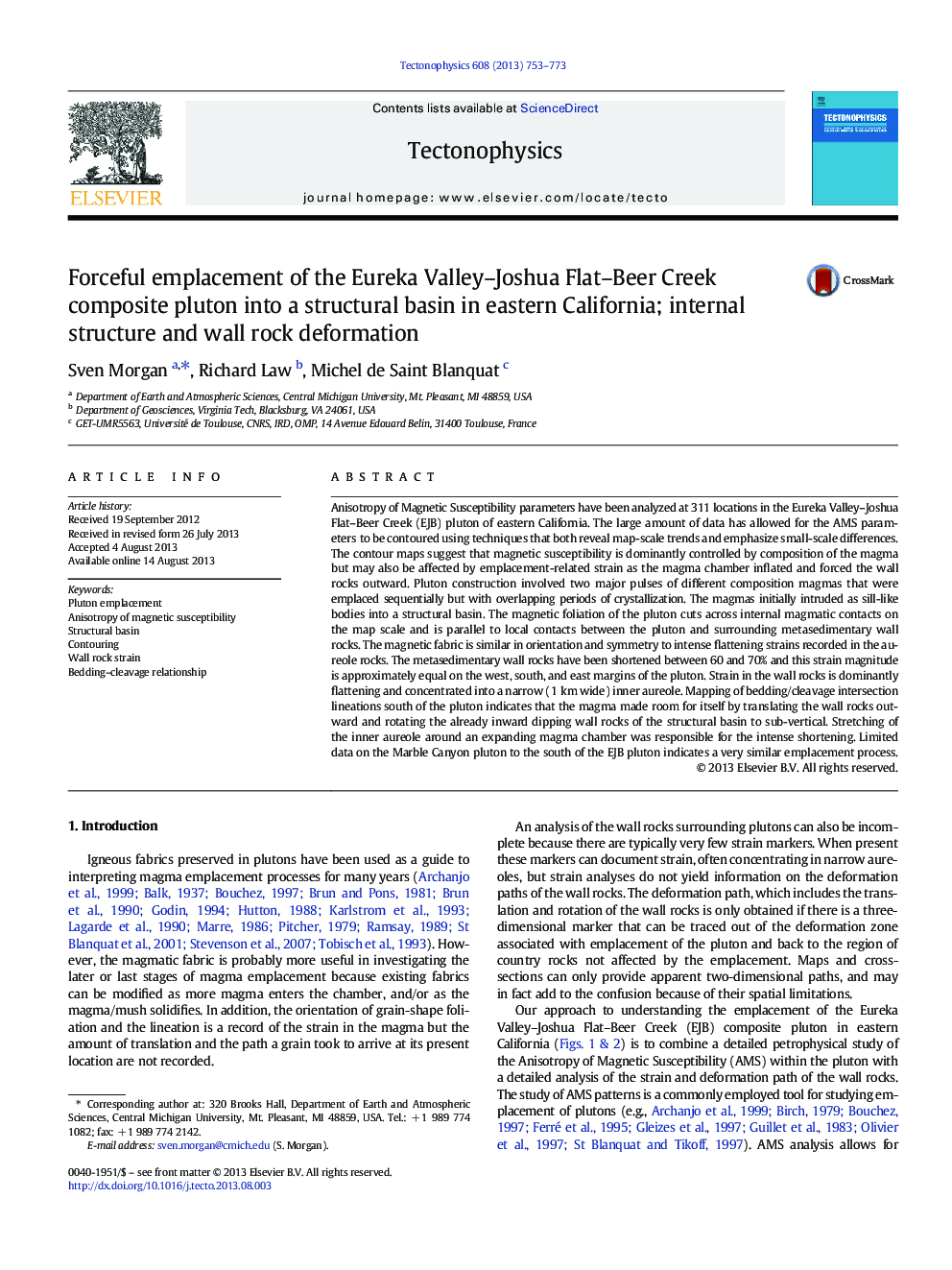| Article ID | Journal | Published Year | Pages | File Type |
|---|---|---|---|---|
| 6434001 | Tectonophysics | 2013 | 21 Pages |
â¢Anisotropy of Magnetic Susceptibility data collected from 311 locations in pluton.â¢AMS data contoured within the pluton using four different methods.â¢Magma intruded into structural basin originally as a sill.â¢Magnetic shape preferred orientation in pluton parallel to strain in aureole.â¢3-d wall rock translation and rotation support model of pluton expansion.
Anisotropy of Magnetic Susceptibility parameters have been analyzed at 311 locations in the Eureka Valley-Joshua Flat-Beer Creek (EJB) pluton of eastern California. The large amount of data has allowed for the AMS parameters to be contoured using techniques that both reveal map-scale trends and emphasize small-scale differences. The contour maps suggest that magnetic susceptibility is dominantly controlled by composition of the magma but may also be affected by emplacement-related strain as the magma chamber inflated and forced the wall rocks outward. Pluton construction involved two major pulses of different composition magmas that were emplaced sequentially but with overlapping periods of crystallization. The magmas initially intruded as sill-like bodies into a structural basin. The magnetic foliation of the pluton cuts across internal magmatic contacts on the map scale and is parallel to local contacts between the pluton and surrounding metasedimentary wall rocks. The magnetic fabric is similar in orientation and symmetry to intense flattening strains recorded in the aureole rocks. The metasedimentary wall rocks have been shortened between 60 and 70% and this strain magnitude is approximately equal on the west, south, and east margins of the pluton. Strain in the wall rocks is dominantly flattening and concentrated into a narrow (1Â km wide) inner aureole. Mapping of bedding/cleavage intersection lineations south of the pluton indicates that the magma made room for itself by translating the wall rocks outward and rotating the already inward dipping wall rocks of the structural basin to sub-vertical. Stretching of the inner aureole around an expanding magma chamber was responsible for the intense shortening. Limited data on the Marble Canyon pluton to the south of the EJB pluton indicates a very similar emplacement process.
